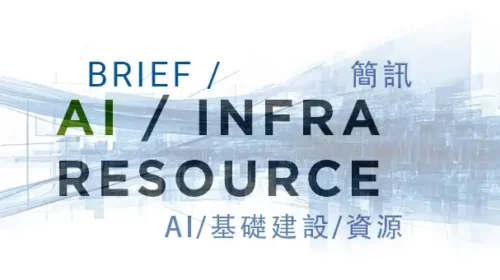Daqo toes the line as Beijing tries to cool down solar oversupply

The polysilicon maker said it is currently using just half its capacity, a level that appears to be set by the central government as it tries to stabilize the market
Key Takeaways:
- Daqo New Energy said its revenue plunged by more than half in the third quarter, as it scaled back production in response to tumbling polysilicon prices
- The company said it will produce around 205,000 MT of polysilicon this year, far below the 285,000 MT it originally forecast in February
By Doug Young
China often gets criticized by the West these days for adding too much capacity in emerging industries, and a perfect example is the solar energy sector. Not only has the country rapidly added huge amounts of new capacity for solar panel production, but also for the polysilicon that’s the main component used to make solar panels.
Now, it seems that Beijing is finally taking action to try and rectify the situation – by strongly “suggesting” that polysilicon producers cap their utilization rates at half, based on the latest comments from Daqo New Energy Corp. (DQ.US; 688303.SH), one of the nation’s leading producers. Here, we need to do a little reading between the lines since Daqo didn’t say outright it has been ordered to cut production.
But somewhat conveniently, the company said it managed to cut its utilization rate to 50% during the third quarter, citing “weak demand.”
The big background here is that Daqo and its peers have been aggressively adding capacity for their polysilicon production over the last two years, all initially spurred by soaring prices for their product as countries raced to build new solar farms to reduce their carbon footprints. Daqo was quite typical of the group, laying out plans to more than triple its capacity to 300,000 MT per year from around 100,000 MT at the end of 2022 by building a massive new production center in the Inner Mongolia region.
The addition of so much new capacity, combined with slower-than-expected building of new solar farms, especially outside China, has caused polysilicon prices to crash, with the result that most companies are now producing at a loss. Again, Daqo is a case in point, reporting it cost the company $6.61 to produce an average kilogram of polysilicon in the third quarter – far more than the $4.69 per kilogram it was able to charge its customers during the period.
As a result, the company reported a gross margin of negative 30.5% during the third quarter, reversing a positive gross margin of 14% a year earlier when prices were still relatively high. Here, we should point out the latest gross margin, while quite weak, marked an improvement from the second quarter when it tanked to a low of negative 72.4%.
That brings us back to the topic of how Beijing is trying to rectify this situation, namely through the strongly suggested capacity cuts we previously mentioned.
Daqo said the China Photovoltaic Industry Association, its industry association, held a meeting on Oct. 14 where it called on everyone to “strengthen self-discipline and reduce unbridled competition.” It added the association also announced a “reference price” for solar modules at the meeting. That sounds like panel producers – who are also facing their own state of huge oversupply and a resulting price war – were also basically given a floor on how low they can slash their prices.
“So there have been conversations going on regarding potentially reducing the production level or the utilization rate to 50% across all the players,” Anita Chu, Daqo’s deputy CEO, said on the company’s third-quarter earnings call, apparently referring to similar “guidance” given to polysilicon makers. Again, without saying so directly, her comments – and Daqo’s own latest utilization rate – strongly suggest that all producers have basically been ordered to use just half their capacity until prices stabilize.
Abandoned by analysts
It’s quite noteworthy that only two analysts from well-known brokerages bothered to attend Daqo’s third-quarter earnings call, where many of the questions came from unidentified investors who seemed more interested in their personal holdings than industry trends. And even the two analysts who attended were from smaller houses, namely Jefferies and Roth Capital Partners.
The reality is that analysts have become quite bearish on the entire solar sector, including both polysilicon and panel makers, due to the huge state of oversupply created by Chinese manufacturers.
The fact that Beijing is trying to step in by mandating low utilization rates and setting a floor for panel prices may help to stabilize the market in the shorter term, and shows how the Chinese government can do this kind of thing that would be unthinkable in the West. But in terms of sector credibility, such moves will only scare off investors and analysts even more, since they show how this industry is as much subject to whimsical policy decisions from Beijing as it is to actual market conditions.
Of the 12 analysts polled by Yahoo Finance in October, just seven rated Daqo a “buy” or “strong buy,” while the other five rated it a “hold” or “underperform.” Those analysts expect Daqo to report losses this year and next, with revenue tumbling more than 50% this year due to the huge drop in polysilicon prices.
The $4.69 average price per kilogram of polysilicon that Daqo charged in the third quarter was down nearly 40% from the $7.68 it charged a year earlier. The huge price drop caused Daqo’s third-quarter revenue to fall by more than half to $198.5 million during the quarter from $484.8 million a year earlier.
As it came under pressure to utilize less capacity, Daqo churned out just 43,592 MT of polysilicon in the third quarter, down from 64,961 MT in the previous quarter. It forecast the amount would fall further still, saying it would produce only between 31,000 MT and 34,000 MT in the fourth quarter as it complies with Beijing’s mandated capacity cuts and also tries to control its losses. As a result, the company said it will produce just 200,000 MT to 210,000 MT for the year, well below the forecast for 280,000 MT to 290,000 MT it gave in February.
The company recorded a net loss of $60.7 million for the quarter, but was quick to point out it has about $2.4 billion in cash and easily accessible bank deposits, as well as no debt, to get it through the current difficulties. We’ve previously suggested the company might consider using some of that cash to privatize from New York, where its current market value is only $1.5 billion, since Western investors have clearly abandoned the company for now.
To subscribe to Bamboo Works weekly free newsletter, click here





